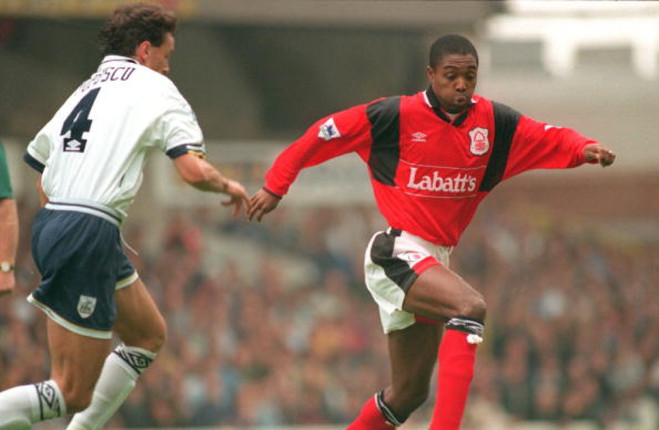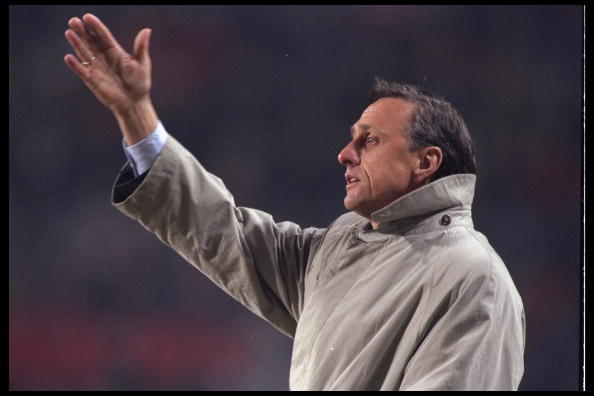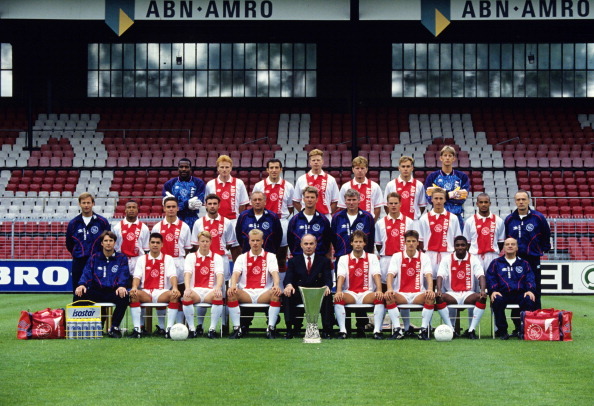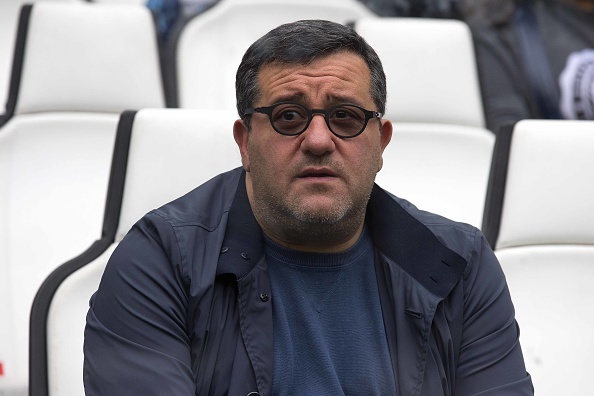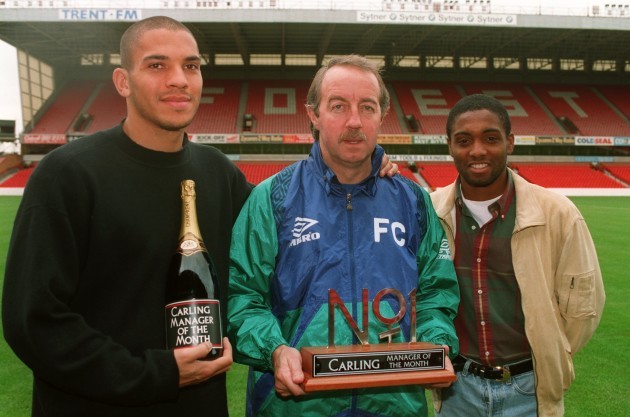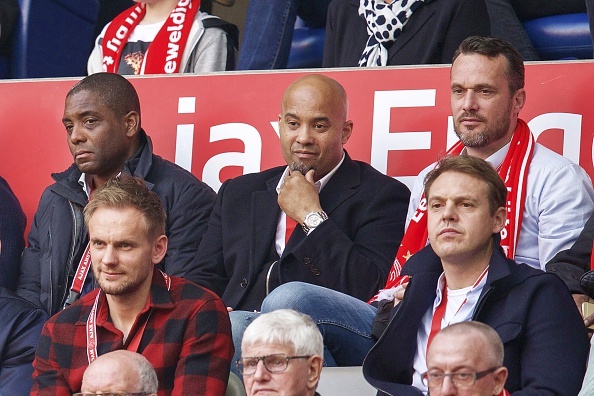OVER THE COURSE of the history of football, in a debate about the most influential individual ever in the game, Johan Cruyff at the very least will feature prominently in any serious conversation.
Cruyff was one of the greatest players of all time, featuring for the Dutch national team and the Ajax sides that revolutionised the way the sport was played in the 1960s, ’70s and ’80s. Yet just as much as for his playing ability, the late star is renowned as being one of the great thinkers in football.
After the Dutch icon’s death in 2016, journalist Gabriele Marcotti on ESPN wrote of Cruyff: “You can separate Barça’s history into BCE (Before Cruyff Era) and CE (Cruyff Era). And, yes, Barça are still, nearly 20 years after he coached his final game for the club, still very much in the Cruyff Era.”
He influenced a generation of coaches, notably current Man City boss Pep Guardiola, whose team plays very much in a manner that Cruyff would have appreciated.
One of the many individuals indebted to Cruyff and his methods is former Nottingham Forest and Holland player Bryan Roy.
When Roy gets excited, he speaks about his time playing football in a reverential tone. And if football was the former Dutch player’s religion, Cruyff most certainly became his God. The former Barca coach was the man most responsible for Roy getting his debut at Ajax as a 17-year-old, and just over two years to the day since his death from lung cancer at the age of 68, the Dutch legend continues to influence his former protégé in the work the latter does now.
“When I was two or three years old, my mum went crazy, because I was always kicking balls in the house,” Roy tells The42.
“So when I was five years old, they bought me a big orange full-size ball. That made me go outside and I thought ‘wow, a big ball, unbelievable’. That’s where it started and I went to my first team, and from there, I ended up where I am now.
Johan Cruyff was head of the academy when I went to play for Ajax at 12. His principles brought so much joy to all the players. His principles always brought out the best qualities of each single position.
“It was always attacking, forward, forward, forward. That was for the boys entertaining, so we had so much joy. We weren’t actually really [preoccupied] with getting into the first team.
“We had so much joy playing together — Frank De Boer, Ronald De Boer, Dennis Bergkamp. All of a sudden, we heard: ‘You can train with the first team.’
“It was not like we were working towards getting in the first team. No, it was all about having fun. Nowadays, with all the channels you have, all the media and all the money, parents who go crazy and want their kids to be a professional footballer, because of money — we didn’t have that.
“It was a bit of a surprise that Johan called my father, it was on a Friday, and Sunday we had to play. Friday and Saturday we had to train with the first team. So the first question to my father was ‘but dad, I have to go to school. I need to do my exams.’ He said: ‘No, everything is already arranged. I called the school and everything [is fine].’
“So that was the mindset we all had in the youth of Ajax, that’s why so many players came through the first team under Johan Cruyff. It was all about having fun and from that point on, you’d get rewarded.”
Cruyff’s greatest advantage as a coach, according to Roy, was the simplicity of his instructions, in contrast with the many modern equivalents, who tend to over-complicate everything.
He had just two rules, which every single player should do: always play forward and play in space. Those rules are so simple that nobody believes them — that’s the thing. But these two rules are the basis of his success.
“If you cannot explain your manner simply, then you don’t understand enough of your own manner.
“I’ve been investigating these two rules now in the last couple of years. Amazing things come out of it and that’s why Guardiola is so successful. Even Mauricio Sarri from Napoli is a big fan of Cruyff and read a lot of books on him. He also comes very close to Cruyff’s thinking on how to play football together and entertain the fans.
“[This way of thinking] has nothing to do with money or having the best players, it’s a philosophy, because when you look at Man United and City, they spend the same money, but look at the way they play. Compare that, and you see what I’m talking about.”
Roy spent 10 years at Ajax between the ages of 12 and 22, a time he describes as the “most special period of my life”.
Between 1988 and 1992, he played over 100 times for the club as a winger. The team, however, were very much in transition and the famous Champions League triumph was still a few years away. During Roy’s time as a senior player, they finished runners-up in all but one season — 1989-90, when they won the title, while he was also part of the side that beat Torino on away goals in the 1992 Uefa Cup final.
Roy worked under three different managers at Ajax: Cruyff, Leo Beenhakker and Louis van Gaal.
I was born in Amsterdam and to play for your club in Amsterdam, now I realise [how special it was]. In those times, you don’t realise it.
“That whole journey of 10 years is something I will never forget. It created the person who I am now.”
Roy also excelled at international level, earning 32 caps for the Netherlands, in the process featuring in two World Cups as well as one European Championships. In 1994, he started the first two group games, before coming off the bench in the victories over Morocco (who he scored the winner against) and Ireland, as well as the quarter-final loss to Brazil.
Euro ’92, when the Dutch side lost on penalties to eventual winners Denmark in the semi-finals, remains his fondest memory with Holland.
“The way we played, all over the world, people were talking about us and how the Dutch national team played,” he says. “That’s one of the most important things that is left.
We didn’t win that cup, but I was in teams who were always remembered for entertaining football and having the biggest players. [Marco] Van Basten, [Frank] Rijkaard, [Ruud] Gullit, [Ronald] Koeman, I played with them in the Dutch national team and it was a big honour for me.”
While giving honourable mentions to Rijkaard and Gullit, he calls Van Basten the best footballer he ever played alongside.
“It’s a pity he got injured at an early age — otherwise, he would be up there with Lionel Messi and Diego Maradona.
“Everything [made him special]. His technique, his scoring ability, his mindset, when you train or play with him, he would always surprise you. Wow!”
The Euros aside, 1992 was a big year for Roy. He departed the city he grew up in and his boyhood club, following a disagreement with Van Gaal. However, another talented young player by the name of Marc Overmars amply filled the void left by his fellow winger’s exit.
During this era, Serie A was widely considered to be the best league in the world and so the highly rated 22-year-old moved to Foggia. Interestingly, the transfer was the first handled by a young and largely unknown agent, Mino Raiola. Since then, Raiola has become one of the most influential figures in world football, and he currently represents a number of top players, including Zlatan Ibrahimovic, Paul Pogba, Romelu Lukaku, Marco Verratti and Gianluigi Donnarumma.
As is often the case with agents, Raiola has made some powerful enemies in football. He famously fell out with former Man United boss Alex Ferguson over the transfer of Pogba to Juventus, while just last week, he was heavily critical of Pep Guardiola in the press. But while the super-agent is not universally loved, Roy reserves high praise for him, and perhaps that is no surprise. Back in 1992, to ensure the move worked out, Raiola himself moved to Foggia for six months and performed chores in Roy’s house, helping to paint it among other tasks.
“He was my brother,” Roy says. “He did everything for me. He did everything to ensure I adapted in the right way. The first few months, it was so difficult for me. He had to go back to Holland.
“So Mino is a very important person for me up to this day… His biggest strength, apart from the fact that he’s a very good businessman, he’s a people manager. He creates close relationships with all his players.”
Under Czech coach Zdeněk Zeman, Foggia played exciting attacking football and the previously unfashionable club were enjoying the best period in their history, having only won promotion to the top flight in 1991. But despite the purchase of Roy and the enterprising 4-3-3 formation they favoured, such was the strength of Italian football at the time that the club finished a relatively modest 12th and ninth in the winger’s two seasons there.
I went from Amsterdam, a big city, to the most ugly city of Italy, Foggia,” he recalls. “Really, there’s nothing there. But the people were so nice, so warm. And that’s where I come from as a family as well — warm people. So the people of Foggia made me adapt in a quick way, and also my team players.”
Nevertheless, financial problems meant Zeman and a number of the club’s best players promptly departed, including Roy.
There was interest from other Italian clubs, Inter, Napoli and Parma reportedly among them, but to the surprise of some observers, Roy’s next move was to a team that had just been promoted to the Premier League, Nottingham Forest.
It was a gamble for both parties. Roy was brought in for what was considered big money at the time — a club record fee of £2.9 million, which amounted to the entirety of then-manager Frank Clark’s summer transfer budget.
The player himself, meanwhile, was not immediately sold on the idea. He knew about Forest’s two famous European Cup wins in 1979 and 1980, but little else about the club or the area. But ultimately, former club goalkeeper and fellow Dutchman Hans van Breukelen helped persuade Roy to make the switch.
Aside from the recruitment of Roy, Clark felt confident his team was good enough to adapt swiftly to Premier League life, and he was proved correct.
Roy was played as a second striker with license to roam behind a young Stan Collymore. There was talent elsewhere in the team too. A solid backline included goalkeeper Mark Crossley, Stuart Pearce and Colin Cooper, while in midfield, Steve Stone, Ian Woan and Lars Bohinen were among the key figures.
It quickly became apparent that Roy and Forest were the perfect match. The Dutch attacker was described by Clark as a “world-class player” upon arriving at the club and the star proceeded to back up those words. He formed up a formidable partnership with Collymore, with the pair managing 13 and 22 goals respectively, as Forest remarkably finished third, just 12 points behind champions Blackburn Rovers. To this day, it remains the joint-best performance by a promoted side in Premier League history (Kevin Keegan’s Newcastle had emulated their feat the previous season).
Of course, it was two very good seasons with that team,” Roy recalls. “Stan, for me, was the perfect man up front, because he was big, strong, quick and very talented.
“So I don’t know how many assists I put in to make goals, there were a lot. But I needed him, to make sure my qualities would render the best.
“And Frank Clark, as a coach, he promoted attacking football. From the goalkeeper to the strikers, they needed to play, so that helped a lot.”
He continues: “Clark gave me the opportunity to play in a free role.
“So straight from my debut [against Ipswich], I scored. And that’s where it took off actually.
Frank Clark created an environment where I could perform in my best way, and I’m very thankful for that.
“My ex-wife and me were already experienced [from moving to] Foggia, so the adaptation was quick. I could always go home back to the family and the rest, so I had a good place to go back to. Without that, it would have been more difficult for me.”
After their incredible 1994-95 season, however, Forest gradually fell apart. Collymore was sold to Liverpool for a national record fee of £8.5 million and his ostensible replacement, Andrea Silenzi (a £1.8 million buy from Torino) failed to live up to expectations.
Forest’s second season in the top flight was by no means a disaster. They finished ninth in the Premier League and went on a memorable Uefa Cup run, before losing out 7-2 on aggregate to a Jurgen Klinsmann-inspired Bayern Munich team in the quarter-finals of the competition.
It subsequently went from bad to worse for Roy and Forest. The following season, they finished bottom of the league and were relegated.
Two things were very important,” the former player remembers. “We couldn’t keep the team together and Stan went to Liverpool. In the third season, Frank Clark got sacked and that was a big blow. It all went wrong for those two things. He didn’t get the biggest players back up front and that was very difficult for me.
“The third season, I got injured as well. It was a bit disappointing, but the first two seasons are still remembered by the fans.”
Roy was just 27 when he left Forest, joining Hertha Berlin for £1.5 million following the English club’s relegation in 1997. Yet the attacker never again hit the heights he had reached in his first season in the Premier League. After three years with the Bundesliga club, he moved back to Holland and spent a season with NAC Breda, before retiring in 2002.
“I had to train at the same intensity as players who were physically much stronger,” he explains. “And that’s why I also got injured, [often] after I was 28 years old. A lot of times, I felt very tired starting a game. That was all down to too hard training, too much work.”
The transition to becoming an ex-footballer is one Roy, like many others before and after him, found difficult. In fact, he says, it was only relatively recently that he properly came to terms with it and began to accept and embrace this status.
Now I’m older, I’ve two kids who are over 20. You think ‘I’m not Bryan Roy anymore, I’m Bryan’. To overcome that step as an ex-football player, you need to overcome the addiction of attention, of being a football player. The moment you settle down in your mind and interact with society, you need time for that and to be focused on getting off that addiction. And I’ve been able to do that, though it takes a couple of years.
“And I think 90% of all the top players have difficulty with that.
“The moment I stopped playing football, I immediately went to the youth academy of Ajax and worked there for 13 years. So I didn’t give myself time.
“Four years ago, I started to recover and that was a difficult time. I went away from Ajax, Johan Cruyff passed away and I needed to get through that and I did, but it was very difficult.
“First, you have to get off your first and second name to get back into society and function really. You’re not that football player anymore. Your identity is not that football player, that’s your talent. When you realise that, you open up to society.
And when you open up, you want to find out new things about yourself and then you start functioning in a normal way again, and use your identity as an ex-football player in a constructive way.
“I was 13 years in the academy of Ajax, the best in the world, let’s be honest, and I learned a lot about how to teach the kids to play football together and how to reach them on the mental side. That was a big idea on how to get back into society, you have to interact with kids. And from that point of view, you develop yourself. So that’s the most important thing I got out of it.”
Even Roy’s work now, he says, can be traced back to Cruyff. For the past six months, he has been involved with SportCo, a company who describe themselves as “a community platform for sports fans, [which] introduces a blockchain algorithm that measures a reader’s engagement on the site and rewards their actions” (more info here).
Roy adds: “I will always stay in football and am now creating a new development programme for coaches and kids — how to play entertaining football based on the principles of Cruyff.
“We want fans to have fun and combine that with their fan engagement and create an ecosystem out of it. And I believe in that. It’s the same way I’ve been brought up.
“Football is for the fans and fans need to be entertained. For that, we need to show football that is entertaining and that’s what Cruyff’s philosophy is based on.”
- Originally published at 10.00
The42 is on Instagram! Tap the button below on your phone to follow us!
